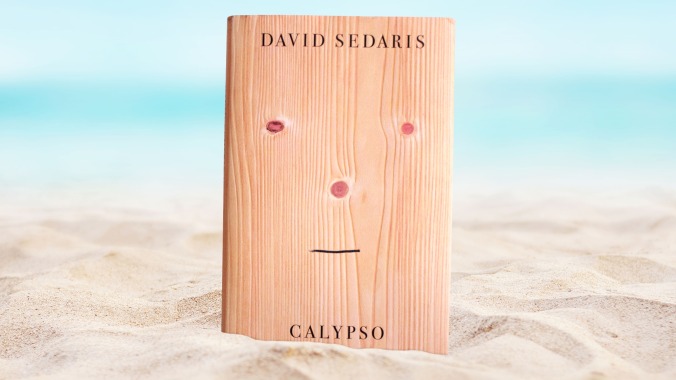
David Sedaris is now 61, and his latest collection of essays meets aging and death head-on. The first sentence of the first chapter tells the reader that, despite a whole industry telling you otherwise, there are few joys in hitting middle age. Sedaris has always written darkly comic material, but in Calypso he doesn’t try to find humor when discussing topics like his sister’s suicide or his mother’s alcoholism. Sedaris is more introspective than he’s ever been, skipping from humorous insights about growing up as one of six children to paragraphs that see him trying to understand why his sister killed herself.
Calypso is concerned mostly with Sedaris’ travel, with a through-line emerging from time spent at his newly acquired vacation home in South Carolina’s Emerald Isle, a house he dubs the Sea Section. It’s here he vacationed with his family when both his sister and mother were alive, and where he now goes with the remaining Sedarises, their partners, and Sedaris’ long-term boyfriend, Hugh. Sedaris uses the familiar setting to interrogate the past as he spends time with his siblings and elderly father.
But this is still a David Sedaris book, and a motif in Calypso is a wild turtle living in a pond near the Sea Section; the turtle has a huge, hideous tumor growing out of its head, and Sedaris quickly forms a bond with the disfigured animal. When Sedaris discovers his own (benign) tumor, he rejects a surgeon’s offer to remove it since he won’t give Sedaris the tumor once it’s out of his body; Sedaris is determined his turtle friend should enjoy his tumor as a snack. A solution comes when he tells the story at a reading and a nurse offers to remove it clandestinely.
The turtle tumor saga is absurdly amusing, as is much of the book. Despite presenting a more reflective version of himself, Sedaris’ sharp observational skills and bone-dry humor are as strong as ever. One of the best essays tracks his obsession with his Fitbit, which induces him to walk for miles around his home in southern England, picking up trash. The municipality names a garbage truck after him, and he describes at length what all he finds scattered on the sides of the roads: “You can tell where my territory ends and the rest of England begins. It’s like going from the Rose Garden in Sissinghurst to Fukushima after the tsunami. The difference is staggering.”
A later chapter finds Sedaris awaiting the Supreme Court ruling on same-sex marriage during one of his long “rambles.” (“I look back on the days I averaged only thirty thousand steps and think, Honestly, how lazy can you get?”) When he writes that he surprised himself by crying when he sees the headline that gay marriage is legal in the U.S., it’s also somewhat surprising for the reader to glimpse a little more behinds the scenes than Sedaris typically reveals. He uses the event to reflect—briefly, but still—on the difficulty of growing up gay in the ’70s. He also outlines an early fantasy wherein he marries a woman and she tragically dies, which would allow him to be so devastated that he never looks at another woman again. He never thought a day would come when gay marriage would be legal, and it’s an unusually emotional moment from an author who has never made his feelings central to his stories. “The Supreme Court ruling tells every gay fifteen-year-old living out in the middle of nowhere that he or she is as good as any other dope who wants to get married,” he writes. “To me it was a slightly mixed message, like saying we’re all equally entitled to wear Dockers and to the Olive Garden.” Calypso is the writer’s most personal book yet, but it’s still signature Sedaris.